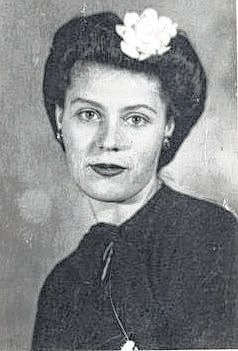
Rita Anderson recently died at the age of 94. In the process of planning for celebrating the closure of Midland School — the racially segregated school here in Wilmington at the corner of Doan and Grant which was closed in 1952 — I met her and talked with her on several occasions.
She was an amazing woman and shared many stories that only a fair-complected black woman in a racially segregated small town could tell. To the end her mind was clear; she had a great sense of humor and unflinchingly shared her life’s experiences.
Her family first built
a barn on Nelson Avenue and later three small houses were erected with a half acre each, in which three related families lived. She explained that this location was between two major transportation routes: the Three C Highway (west Main St.) and the railroad. This location meant that hobos traveling either route would stop at their house for food and lodging. Her mother would accept all of them, white and black, give them very weak spaghetti soup and send them on their way. If they needed to stay over night they slept on the kitchen floor and in the winter received corn cobs to keep the kitchen fire going.
She recalled that she and her brothers would take their wagon to the railroad tracks and when a train passed by the engineer would shake the coal car in such a manner that pieces of coal would fall and they would place the coal in their wagon to fuel their stove.
When her mother was unable to adequately feed her children she started purchasing moonshine from Kentucky and sold it locally. When the federal revenuers came to check on her mother’s dealings, she would tie a string around the bottles and lower them into the well. She delightfully related that, ‘they never caught her.’ To enhance the contraband liquor she would add brown sugar and sell it as bourbon.
She attended Midland School for seven years. She also confessed that she failed the first grade, but was able to make that up during the summer when Wilmington College students taught at the school. From her home on Nelson Avenue it was nearly two miles to Midland School or almost four miles per day. Occasionally, police officers would pick them up or they would hitch a ride on a wagon.
Nearby on Main Street the Buster family (also a black family) had a restaurant, green houses and sold produce, flowers and even fish to passer bys. Rita worked for this family and later was a bar tender at Hammys (a favorite hangout for Wilmington College students on Langdon Avenue). Eight black families lived adjacent to each other on this stretch of Main Street including the nationally known jazz musician Norris Turney..
Rita became a certified hair dresser and ran a shop in her home on Nelson Avenue for some 20 years. During the day hours she served black customers, and after dark she served white customers. This was typical of the inconsistencies of racism in Wilmington.
On one occasion she hurt her arm and was taken to the black physician Dr. William Oakley, who had his office on the second floor of a building near the intersection of Main and South streets. In a history of Clinton County it states that two-thirds of his patients were white.
On that strip of Main Street between South and Mulberry were the White House restaurant and the Denver Hotel, where blacks were not admitted, as well as the Murphy Theatre, where they sat only in designated sections. Being able to “pass”, she would occasionally purchase and take food out from the White House to her friends.
Rita Anderson who was a friend of all will be missed, as will her smiling face and incomparable tales.


